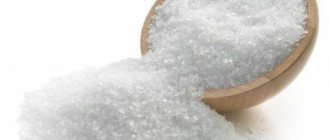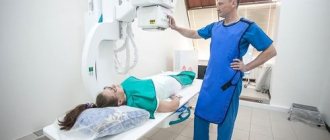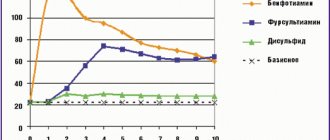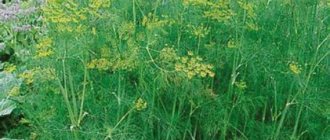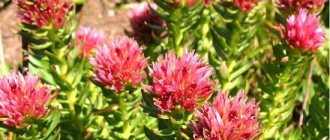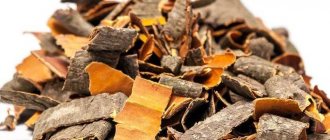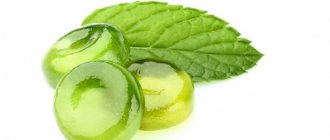Lignin is a complex (network) aromatic natural polymer, which is part of terrestrial plant organisms, a product of biosynthesis. Lignin ranks third after cellulose in terms of abundance among polymers on earth. It plays a very important role in the natural carbon cycle. The formation of lignin became possible due to the evolutionary transition of plants from an aquatic to a terrestrial lifestyle in order to provide rigidity and stability to stems and trunks (like chitin in arthropods).
Chemical properties
This substance is an amorphous powdery compound. Color: various shades of brown. The compound has a specific odor. Molecular weight from 5000 to 10000. In Lignin Hydrolysis, lignin is about 50-80%, the rest is impurities (difficult to hydrolyze polysaccharides , resinous substances, ash enzymes ). The product is poorly soluble in water and organic solvents .
When dry, the substance burns well, but when sprayed it is explosive. The ignition temperature is 195 degrees Celsius, the product begins to smolder at 185 degrees.
Hydrolytic Lignin has found wide application in various branches of science and industry.
It is used:
- for the production of fuel briquettes, gas, fuel for boilers;
- as a raw material for the production of briquetted metal and silicon reducing agents;
- in the production of nitrolignin , plastics, fertilizers, bricks, soil structure formers;
- as a herbicide ;
- in the chemical industry as a raw material for the production of acetic acid, phenol, oxalic acid ;
- for the creation of activated carbon and other enterosorbents ;
- as a sorbent in medicine and veterinary medicine.
a brief description of
The main components of plant tissue are cellulose, hemicellulose and lignin. Coniferous wood contains up to 38% of this substance, deciduous wood contains up to 25%, and cereal straw contains up to 20%. Lignin is located in cell walls and intercellular space, holding cellulose fibers together. Together with hemicellulose, it is designed to provide mechanical strength to tree trunks. In addition, the natural polymer is responsible for the tightness of cell walls (for nutrients and water) and determines the color of lignified tissue. Lignin is chemically and physically firmly incorporated into the structure of plant tissue, so isolating it from there industrially is a very difficult engineering task.
Pharmacodynamics and pharmacokinetics
In the gastrointestinal tract, the substance adsorbs various microorganisms and their metabolic products, xenobiotics , toxins , radioactive isotopes , allergens, ammonia , and heavy metals. The product has a positive overall effect on the functioning of the gastrointestinal tract , thereby compensating for the lack of dietary fiber and normalizing the microflora.
This compound is not metabolized and, after penetration into the gastrointestinal tract, is excreted unchanged.
Experience of using enterosorbents in the complex treatment of atopic dermatitis in children
The prevalence of allergic diseases in children remains high. This is confirmed by numerous clinical observations and the results of epidemiological studies. Atopic dermatitis occupies a leading place in the structure of allergic diseases. Atopic dermatitis is a systemic allergic disease with a complex pathogenesis and characteristic age-related evolution of clinical manifestations. It is characterized by a persistent course, frequent exacerbations and insufficient effectiveness of existing treatment methods.
Over the years, knowledge about the nature of the disease has been improved and deepened, new concepts of pathogenesis have emerged, and terminology has changed. According to the modern concept, the development of atopic dermatitis is based on immunological mechanisms and disorders (dysfunction) of the epidermal barrier. The main pathomorphological changes that occur during atopic dermatitis occur in the epidermis, affecting the dermis in severe, continuously relapsing course of the disease.
Currently, a scientific point of view has emerged that atopic dermatitis develops under the influence of genetic and environmental factors. The antigenic load on the body of factors of exogenous and endogenous origin plays one of the most important roles in the mechanisms of disease development.
Exogenous factors include a variety of allergens (food, household, mite, pollen, fungal, epidermal, medicinal) and nonspecific stimuli (climate, stress, smoking, cold). Endogenous factors constitute the pathological conditions associated with atopic dermatitis. In 80–90% of children with atopic dermatitis, pathological changes are observed in the gastrointestinal tract, in 20–30% in the respiratory system, and in 15–18% in the kidneys. Violation of the barrier function of internal organs contributes to a faster entry of exoallergens into the body. With a long, continuously relapsing course of the disease, the processes of their elimination are disrupted in the vast majority of patients. Products of disturbed metabolism accumulate in tissues and biological fluids, the content of bile acids and the concentration of biologically active substances (histamine, serotonin, eicosanoids, cytokines, etc.) formed in the body during significant antigenic stimulation increase. Endogenous intoxication syndrome develops. Clinically, the syndrome of endogenous intoxication manifests itself in the form of marbling of the skin, acrocyanosis, grayish tint of the skin, dryness and flaking.
For the purpose of detoxification, efferent therapy is used, aimed at removing allergens and toxins from the body. The most effective of them are sorption methods. In pediatric practice, the enterosorption method is most often used - a method based on the binding and removal from the body of allergens, various exogenous and endogenous compounds, pathogenic microorganisms and their metabolic products.
Enterosorption is a treatment method based on the ability of enterosorbents to bind and remove from the body various exogenous substances, microorganisms and their toxins, intermediate and final metabolic products. These substances can accumulate or penetrate into the lumen of the gastrointestinal tract.
Against the background of enterosorption, the functional activity of cellular and humoral immunity increases, the number of T-lymphocytes increases, the severity of eosinophilia decreases, the level of circulating immune complexes decreases, skin itching and swelling decreases, and the frequency and severity of bronchial asthma attacks decreases.
Enterosorbents (ESB) are medical preparations that have a high sorption capacity, are not destroyed in the gastrointestinal tract and are capable of binding exo- and endogenous substances by adsorption, ion exchange or complexation.
The important thing is that sorbents allow you to reduce the dose of hormones, and in some cases even cancel them.
A wide range of sorption agents are used in clinical practice. The therapeutic effect of the sorbent is achieved due to the physicochemical properties of the sorbent substance, which is capable of binding and removing exogenous and endogenous compounds from the body. The decisive role is played by porosity, which is characterized by the presence of pores between grains, layers, and crystals. Sorbents can have micropores, mesopores, macropores. Therefore, the choice of sorbent with different porous structure affects the adsorption of certain toxins, which determines the therapeutic effect of the sorbent.
Enterosorbents are divided according to the following characteristics:
- By dosage form - granules (coals), powders (carbolene, cholestyramine), tablets, pastes, food additives (pectins, chitin).
- According to the chemical structure - activated carbons, aluminosilicates, aluminogel, oxide, organomineral and composite sorbents, dietary fiber.
- By sorption mechanisms - adsorbents, absorbents, ion-exchange materials, sorbents with catabolic properties, sorbents with combined mechanisms.
- By selectivity - selective, mono-, bi-, polyfunctional, non-selective (activated carbons, natural preparations - lignin, chitin, cellulose) [1].
The following requirements apply to modern enterosorbents:
- must not have toxic properties;
- be non-traumatic for mucous membranes;
- good evacuation from the intestines;
- have good functional (sorption) properties;
- do not cause dysbacteriosis;
- have a convenient dosage form.
Of particular interest are sorbents that contain a prebiotic. These products include Lactofiltrum. The drug contains a prebiotic (lactulose) and a sorbent (lignin).
The properties of Lactofiltrum are due to the high sorption capacity of a natural enterosorbent based on lignin. Hydrolytic lignin is a complex natural organic compound, a product of hydrolytic wood processing, and an enterosorbent. Has a nonspecific detoxification effect. Binds, retains and removes from the body various pathogenic microflora, exo- and endotoxins, drugs, heavy metal salts, alcohol, allergens, excess of certain metabolic products (bilirubin, cholesterol, histamine, serotonin, urea, other metabolites responsible for the development of endogenous toxicosis). Due to the large surface area and developed pore system, lignin has a high sorption capacity. Lignin is non-toxic, not absorbed, and is completely eliminated from the intestines within 24 hours.
The second component of Lactofiltrum is lactulose, a synthetic disaccharide consisting of a galactose residue and a fructose residue. In the large intestine, lactulose is fermented by normal intestinal microflora as a dietary substrate. Lactulose stimulates the growth of bifidobacteria and lactobacilli in the large intestine, promotes the normalization of the metabolism of proteins, fats and carbohydrates, the proper absorption of vitamins, macro- and microelements, and also stimulates nonspecific immunity. As a result of the hydrolysis of lactulose, organic acids (lactic, acetic and formic) are formed, which suppress the growth of pathogenic microorganisms and consequently reduce the production of nitrogen-containing toxic substances. The described process leads to an increase in osmotic pressure in the lumen of the large intestine and stimulation of peristalsis. Lactulose is not absorbed by the human body.
The advantage of Lactofiltrum is its dual action: the sorbent neutralizes pathogenic microorganisms and removes intestinal toxins, and the prebiotic stimulates the growth of beneficial microflora (bifidobacteria and lactobacilli). The complex effect of Lactofiltrum components leads to the formation of a powerful protective factor - normal intestinal microflora, elimination of clinical manifestations of dysbiosis, faster disappearance of symptoms of allergic diseases and effective detoxification of the body.
Directions for use and doses
Below is the experience of using Lactofiltrum in complex therapy of children with atopic dermatitis. 36 children aged from two to five years were under observation (n = 26 - main group, n = 10 - control group). There were 20 boys, 16 girls. The duration of the disease ranged from one year to 4.5 years. According to the severity of the disease: 16 children had a moderate course of the disease (SCORAD index = 38.4 ± 1.8 points), 10 patients had a severe course of atopic dermatitis (SCORAD index = 56.5 ± 1.5 points). The comparison group consisted of 10 children with moderate atopic dermatitis who received only traditional therapy.
In children with moderate atopic dermatitis, the skin process was localized in the face, neck with transition to the skin of the forearms and elbows, on the flexor surface of the wrist joints, the back of the hands and in the popliteal fossae. The pathological process was acutely inflammatory in nature and was represented by hyperemia, edema, foci of exudation, excoriation, crusts, and peeling. The skin outside the lesions was dry, with reduced turgor and elasticity. There was moderate itching of the skin.
In children with severe atopic dermatitis, the process was widespread; there was pronounced hyperemia and swelling, pronounced and extensive foci of exudation, papular elements merging into foci of persistent infiltration. Lichenification was pronounced, deep linear cracks, excoriations, and serous-hemorrhagic crusts were observed. All patients experienced severe itching and sleep disturbance.
Lactofiltrum was prescribed orally 3 times a day between meals (1–1.5 hours before or after meals or taking other medications).
Age dosages: children from three to five years old, 1 tablet 3 times a day; and for children from two to three years old, 1/2 tablet 3 times a day. The duration of the course is 2 weeks.
The inclusion of enterosorbent Lactofiltrum in the complex therapy of atopic dermatitis, accompanied by endogenous intoxication syndrome, has significantly reduced the severity of the skin process, itching and dryness of the skin. At the same time, the SCORAD index in children of the main group decreased to 14.6 ± 2.1 and 28.4 ± 1.4 points, respectively (Fig. 1), while in children from the comparison group such a pronounced regression of skin rashes was not observed.
In patients of the main group, during the use of Lactofiltrum, there was a normalization of existing stool disorders. A course of use of Lactofiltrum made it possible to shorten the period of exacerbation (Fig. 2), prolong the remission of the disease by an average of 4.6 ± 2.3 months in children in the main group compared with patients from the comparison group (2.9 ± 1.8 months).
Thus, the inclusion of the drug Lactofiltrum in the complex therapy of children with atopic dermatitis in an age-appropriate dose for 14 days increased the clinical effectiveness of treatment, promoting a more rapid resolution of the skin process, which shows not only a positive short-term effect, but also positive long-term results. The drug is easy to take, non-toxic, and does not cause side effects.
Literature
- Botkina A. S. Use of dioctahedral smectite in children with atopic dermatitis // Issues of modern pediatrics. 2008, vol. 7, no. 2, p. 1–4.
- Methods for correcting dysbiotic intestinal disorders in children with atopic dermatitis. Tutorial. Ed. prof. L. F. Kaznacheeva. Novosibirsk, 2004. 72 p.
- Paliy I.G., Reznichenko I.G. Modern view on the problem of enterosorption: choosing the optimal drug // News of medicine and pharmacy. 2007. No. 11, p. 217.
V. A. Revyakina, Doctor of Medical Sciences, Professor
Research Institute of Nutrition of the Russian Academy of Medical Sciences , Moscow
Contact information about the author for correspondence
Indications for use
The medicine is used:
- in case of acute poisoning with drugs, alkaloids , salts of heavy metals , alcohol;
- for the treatment of dysentery , dyspepsia , diarrhea , food intoxication, flatulence , dysbacteriosis , salmonellosis ;
- for kidney and liver diseases;
- persons suffering from metabolic disorders (lipid), obesity , atherosclerosis ;
- for food allergies and drug allergies
Excerpt characterizing Lignin
A hussar rode next to him, carrying behind him on the back of his horse a boy in a tattered French uniform and a blue cap. The boy held the hussar with his hands, red from the cold, moved his bare feet, trying to warm them, and, raising his eyebrows, looked around him in surprise. It was the French drummer taken in the morning. Behind, in threes and fours, along a narrow, muddy and worn-out forest road, came the hussars, then the Cossacks, some in a burka, some in a French overcoat, some with a blanket thrown over their heads. The horses, both red and bay, all seemed black from the rain flowing from them. The horses' necks seemed strangely thin from their wet manes. Steam rose from the horses. And the clothes, and the saddles, and the reins - everything was wet, slimy and soggy, just like the earth and the fallen leaves with which the road was laid. People sat hunched over, trying not to move in order to warm up the water that had spilled onto their bodies, and not to let in the new cold water that was leaking under the seats, knees and behind the necks. In the middle of the stretched out Cossacks, two wagons on French horses and harnessed to Cossack saddles rumbled over stumps and branches and rumbled along the water-filled ruts of the road. Denisov's horse, avoiding a puddle that was on the road, reached to the side and pushed his knee against a tree. - Eh, why not! - Denisov screamed angrily and, baring his teeth, hit the horse three times with a whip, splashing himself and his comrades with mud. Denisov was out of sorts: both because of the rain and because of hunger (no one had eaten anything since the morning), and most importantly because there was still no news from Dolokhov and the person sent to take the tongue had not returned. “There will hardly be another case like today where transport will be attacked. It’s too risky to attack on your own, but if you put it off until another day, one of the big partisans will snatch the booty from under your nose,” thought Denisov, constantly looking ahead, thinking of seeing the expected messenger from Dolokhov. Having arrived at a clearing along which one could see far to the right, Denisov stopped. “Someone is coming,” he said. Esaul looked in the direction indicated by Denisov. - Two people are coming - an officer and a Cossack. “It’s just not supposed to be the lieutenant colonel himself,” said the esaul, who loved to use words unknown to the Cossacks. Those driving, going down the mountain, disappeared from view and a few minutes later appeared again. Ahead, at a tired gallop, driving his whip, rode an officer - disheveled, thoroughly wet and with his trousers billowed above his knees. Behind him, standing in stirrups, a Cossack was trotting. This officer, a very young boy, with a wide, ruddy face and quick, cheerful eyes, galloped up to Denisov and handed him a wet envelope. “From the general,” said the officer, “sorry that it’s not quite dry... Denisov, frowning, took the envelope and began to open it. “They said everything that was dangerous, dangerous,” said the officer, turning to the esaul, while Denisov read the envelope handed to him. “However, Komarov and I,” he pointed to the Cossack, “were prepared.” We have two pistos... What is this? - he asked, seeing the French drummer, - a prisoner? Have you been to battle before? Can I talk to him? - Rostov! Peter! - Denisov shouted at this time, running through the envelope handed to him. - Why didn’t you say who you are? - And Denisov turned around with a smile and extended his hand to the officer. This officer was Petya Rostov. The whole way Petya was preparing for how he would behave with Denisov, as a big man and an officer should, without hinting at a previous acquaintance. But as soon as Denisov smiled at him, Petya immediately beamed, blushed with joy and, forgetting the prepared formality, began to talk about how he drove past the French, and how glad he was that he had been given such an assignment, and that he was already in battle near Vyazma, and that one hussar distinguished himself there. “Well, I hate to see you,” Denisov interrupted him, and his face again took on a preoccupied expression. “Mikhail Feoklitich,” he turned to the esaul, “after all, this is again from a German.” He doesn't consist of anything. “And Denisov told the esaul that the contents of the paper brought now consisted of a repeated demand from the German general to join in an attack on the transport. “If we don’t take it tomorrow, they’ll kick it out from under our noses,” he concluded. While Denisov was talking to the esaul, Petya, embarrassed by Denisov’s cold tone and assuming that the reason for this tone was the position of his trousers, so that no one would notice, straightened his fluffed trousers under his overcoat, trying to look as militant as possible. - Will there be any order from your honor? - he said to Denisov, putting his hand to his visor and again returning to the game of adjutant and general, for which he had prepared, - or should I remain with your honor? “Orders?” Denisov said thoughtfully. -Can you stay until tomorrow? - Oh, please... Can I stay with you? – Petya screamed. - Yes, exactly what did the geneg'al tell you to do - go veg now? – Denisov asked. Petya blushed. - Yes, he didn’t order anything. I think it is possible? – he said questioningly. “Well, okay,” Denisov said. And, turning to his subordinates, he made orders that the party should go to the resting place appointed at the guardhouse in the forest and that an officer on a Kyrgyz horse (this officer served as an adjutant) should go to look for Dolokhov, to find out where he was and whether he would come in the evening . Denisov himself, with the esaul and Petya, intended to drive up to the edge of the forest overlooking Shamshev in order to look at the location of the French, at which tomorrow’s attack was to be directed. “Well, God,” he turned to the peasant conductor, “take me to Shamshev.” Denisov, Petya and the esaul, accompanied by several Cossacks and a hussar who was carrying a prisoner, drove to the left through the ravine, to the edge of the forest. The rain passed, only fog and drops of water fell from tree branches. Denisov, Esaul and Petya silently rode behind a man in a cap, who, lightly and silently stepping with his bast-clad feet on roots and wet leaves, led them to the edge of the forest. Coming out onto the road, the man paused, looked around and headed towards the thinning wall of trees. At a large oak tree that had not yet shed its leaves, he stopped and mysteriously beckoned to him with his hand. Denisov and Petya drove up to him. From the place where the man stopped, the French were visible. Now, behind the forest, a spring field ran down a semi-hillock. To the right, across a steep ravine, a small village and a manor house with collapsed roofs could be seen. In this village and in the manor's house, and throughout the hillock, in the garden, at the wells and pond, and along the entire road up the mountain from the bridge to the village, no more than two hundred fathoms away, crowds of people were visible in the fluctuating fog. Their non-Russian screams at the horses in the carts struggling up the mountain and calls to each other were clearly heard. “Give the prisoner here,” Denisop said quietly, not taking his eyes off the French. The Cossack got off his horse, took the boy off and walked up to Denisov with him. Denisov, pointing to the French, asked what kind of troops they were. The boy, putting his chilled hands in his pockets and raising his eyebrows, looked at Denisov in fear and, despite the visible desire to say everything he knew, was confused in his answers and only confirmed what Denisov was asking. Denisov, frowning, turned away from him and turned to the esaul, telling him his thoughts.
Lignin Hydrolysis, instructions for use (Method and dosage)
The product is available in the form of tablets, granules, paste or powder. In any case, it is recommended to take the substance before meals, several times a day.
Before use, the substance must be dissolved in 300-400 ml of water, stirring for 2 minutes.
The dosage is determined by the doctor in a particular case.
As a rule, adults are prescribed from 5 to 7 grams per day. For children, depending on weight, the daily dosage is half as much.
The course of treatment is determined by the doctor.
Economic significance
Every year, the world produces about 70 million tons of technical lignin. Despite the fact that it is considered a valuable chemical raw material, the marketing of the substance is very poorly organized. In addition, due to the lack of profitable production technology, the use of this polymer is not economically feasible. For example, the decomposition of lignin into less complex chemical compounds (benzene, phenol and others) is more expensive than the synthesis of these compounds from oil and gas. Statistics from the International Lgnin Institute show that in the world only 2% of technical lignins are used for agricultural, industrial and other needs. They are mainly used for the production of lignin pellets, fertilizers and other small-scale products. The remaining 98% is either burned in power plants or simply buried in burial grounds.
The difficulty of industrial processing of lignin is associated with the complexity of its nature, the great variability of structural units and their connections, as well as the instability of the polymer to chemical and thermal effects. Industrial waste does not contain a natural polymer, but lignin-containing substances, or mixtures of substances that have great chemical and biological activity. It also cannot do without impurities.
It is believed that it is not advisable to live near lignin storage facilities. The substance is flammable and burns well, releasing nitrogen, sulfur and other unpleasant compounds. Extinguishing storage facilities is complicated by their large dimensions and the peculiarities of polymer combustion. Some studies have confirmed the mutagenic activity of the substance. Thus, there is every reason to assert that technical lignins in the national economic balance represent an impressive, constantly growing negative value.
Drugs containing (Analogs)
Level 4 ATC code matches:
Polyvinylpyrrolidone
Polysorb
Polyphepan
Smecta
Enterosgel
Atoxyl
Neosmectin
Filtrum-STI
Lactofiltrum
Enterodesis
The substance is part of: Polyfan, Lignin, Polyphepan, Hydrolytic Purified Lignin, Filtrum-STI, Entegnin .
Prospects
Having learned what lignin is, let’s talk a little about the prospects for its industrial use. The technology for processing and delignification of cellulose-containing raw materials is associated with large capital investments and is not entirely environmentally friendly. Scientists around the world have long been working on creating highly efficient methods for organizing cellulose and biochemical production, but their developments have not yet found wide application. Nevertheless, many developments in the field of utilization of fresh and stored lignin have been introduced into industry over the years. These issues are of particular relevance in light of the growing interest in combating environmental problems and using the entire range of plant materials. Thus, it would be wrong to deny the prospect of using lignin in the industrial and agricultural sector.
The level of production and consumption of cellulose and other biochemical products is considered the most important indicator of economic development for large countries. Of course, it is not biochemists who make the decisive contribution to the deterioration of the environmental situation. However, in the places where such enterprises operate, their role in environmental pollution can be quite significant.



